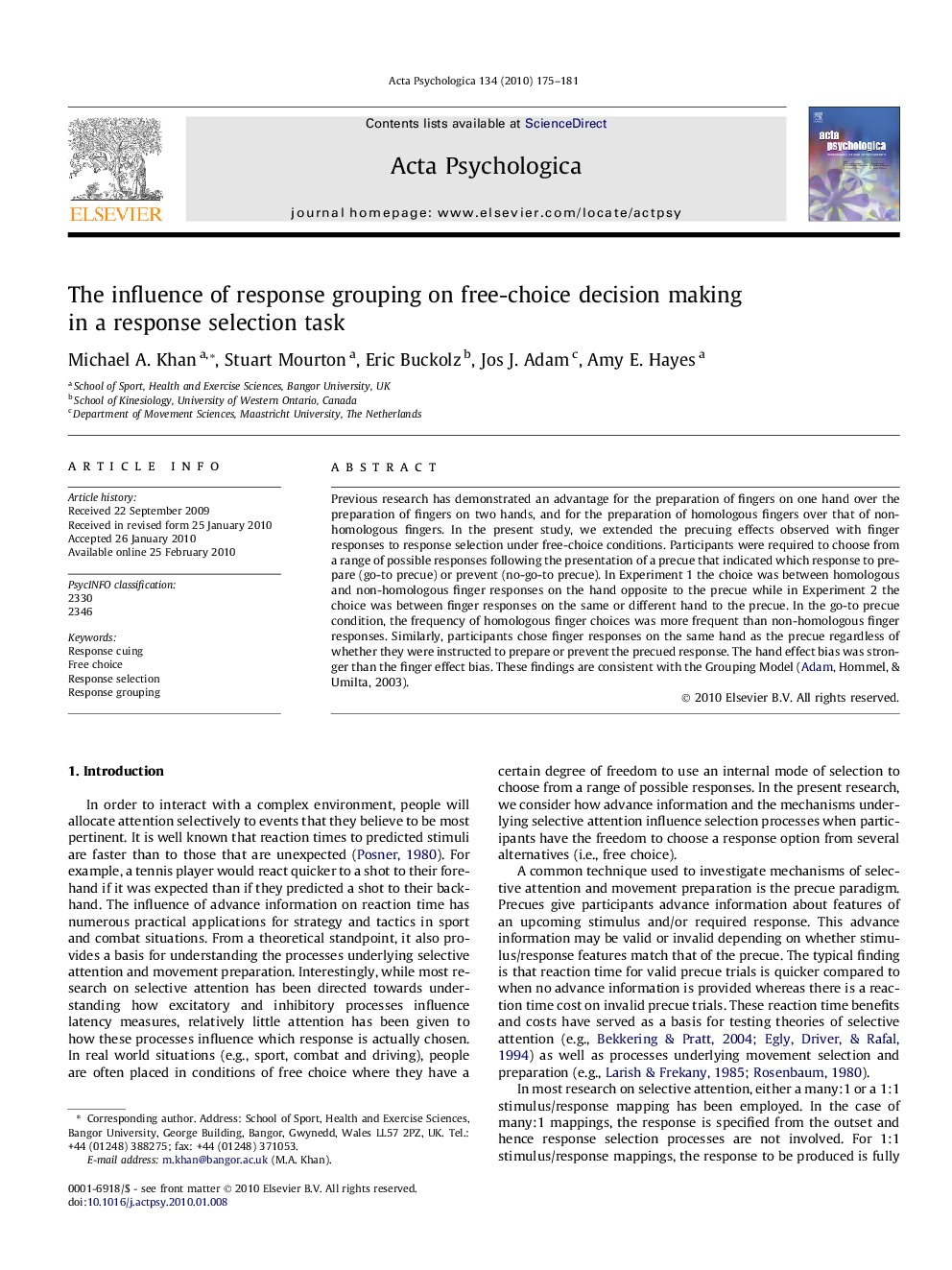| Article ID | Journal | Published Year | Pages | File Type |
|---|---|---|---|---|
| 920217 | Acta Psychologica | 2010 | 7 Pages |
Previous research has demonstrated an advantage for the preparation of fingers on one hand over the preparation of fingers on two hands, and for the preparation of homologous fingers over that of non-homologous fingers. In the present study, we extended the precuing effects observed with finger responses to response selection under free-choice conditions. Participants were required to choose from a range of possible responses following the presentation of a precue that indicated which response to prepare (go-to precue) or prevent (no-go-to precue). In Experiment 1 the choice was between homologous and non-homologous finger responses on the hand opposite to the precue while in Experiment 2 the choice was between finger responses on the same or different hand to the precue. In the go-to precue condition, the frequency of homologous finger choices was more frequent than non-homologous finger responses. Similarly, participants chose finger responses on the same hand as the precue regardless of whether they were instructed to prepare or prevent the precued response. The hand effect bias was stronger than the finger effect bias. These findings are consistent with the Grouping Model (Adam, Hommel, & Umilta, 2003).
